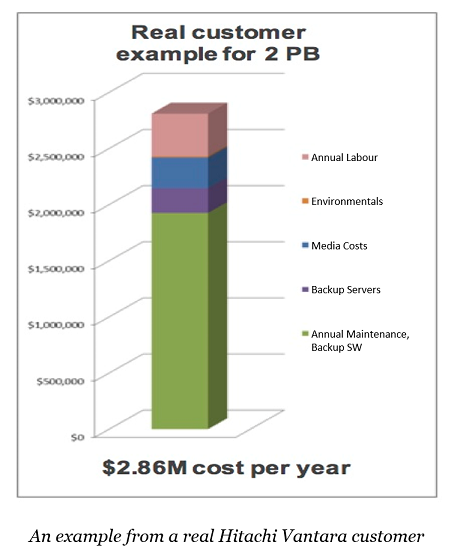BY: Paul Bruton, Business Director, Data Intelligence, Hitachi Vantara Asia Pacific
The noted futurist and author, Alvin Toffler, famously described technology as the “great growling engine of change.” He was right. And, it is growling more loudly than ever!
For today’s corporate IT departments, simply maintaining the status quo is no longer enough. The pressures to deliver file service solutions that go beyond the basic functions of legacy file servers and network-attached storage (NAS) platforms is greater than ever and is complicated by a host of variables.
According to Gartner, 28% of corporate data already resides exclusively on laptops, smartphones and tablets making it a challenge for any organization to gain control and visibility of these data sets to govern and manage them in line with corporate policy.
Add to this Virtual Desktop Infrastructure (VDI) deployments, compliance requirements, metadata-driven policy management, collaboration, affinity for cloud architectures, and increasing threat from cyber-attacks, and you begin to see why enterprises need a modernized file services solution.
The Rising Costs of Storage
Creating all this data is an expensive proposition, but it’s nothing compared to the total cost of ownership over time, which puts a tremendous strain on IT teams. According to Veritas, in an average ten petabyte environment, 41% of data is stale and organizations are spending over US$20 million per year just to manage this data! Personal experience sees this number in the 60 – 80% range.
When you factor in the cost of protecting this data with traditional backup solutions, it’s clear that the operational and financial challenges of continuing with these aging technologies will have a significant impact on an organization as shown in the below diagram.

Embracing Object Storage
Solving this costly unstructured data problem is the catalyst for moving to a modern IT architecture. With many corporate IT teams looking for a “next generation NAS” that is capable of meeting business demands while reducing complexity and costs – many are turning to object storage.
Thanks to its next-generation cloud based architecture, object storage can scale seamlessly and automatically, enabling users to leverage off-the-shelf hardware while securing their corporate data. Add to this the ability to reduce physical capacity requirements by 40-50% with global deduplication and compression and it’s a hard proposition to ignore.
Ultimately, the equation is simple. Adopting a holistic approach to data management addresses the challenges of exploring and discovering relevant, valuable, and factual information across disparate repositories, to deliver timely business insights that are fully actionable. This is data intelligence!
The noted futurist and author, Alvin Toffler, famously described technology as the “great growling engine of change.” He was right. And, it is growling more loudly than ever!
For today’s corporate IT departments, simply maintaining the status quo is no longer enough. The pressures to deliver file service solutions that go beyond the basic functions of legacy file servers and network-attached storage (NAS) platforms is greater than ever and is complicated by a host of variables.
 |
| Paul Bruton, Business Director, Hitachi Vantara |
Add to this Virtual Desktop Infrastructure (VDI) deployments, compliance requirements, metadata-driven policy management, collaboration, affinity for cloud architectures, and increasing threat from cyber-attacks, and you begin to see why enterprises need a modernized file services solution.
The Rising Costs of Storage
Creating all this data is an expensive proposition, but it’s nothing compared to the total cost of ownership over time, which puts a tremendous strain on IT teams. According to Veritas, in an average ten petabyte environment, 41% of data is stale and organizations are spending over US$20 million per year just to manage this data! Personal experience sees this number in the 60 – 80% range.
When you factor in the cost of protecting this data with traditional backup solutions, it’s clear that the operational and financial challenges of continuing with these aging technologies will have a significant impact on an organization as shown in the below diagram.
Embracing Object Storage
Solving this costly unstructured data problem is the catalyst for moving to a modern IT architecture. With many corporate IT teams looking for a “next generation NAS” that is capable of meeting business demands while reducing complexity and costs – many are turning to object storage.
Thanks to its next-generation cloud based architecture, object storage can scale seamlessly and automatically, enabling users to leverage off-the-shelf hardware while securing their corporate data. Add to this the ability to reduce physical capacity requirements by 40-50% with global deduplication and compression and it’s a hard proposition to ignore.
Ultimately, the equation is simple. Adopting a holistic approach to data management addresses the challenges of exploring and discovering relevant, valuable, and factual information across disparate repositories, to deliver timely business insights that are fully actionable. This is data intelligence!
Comments